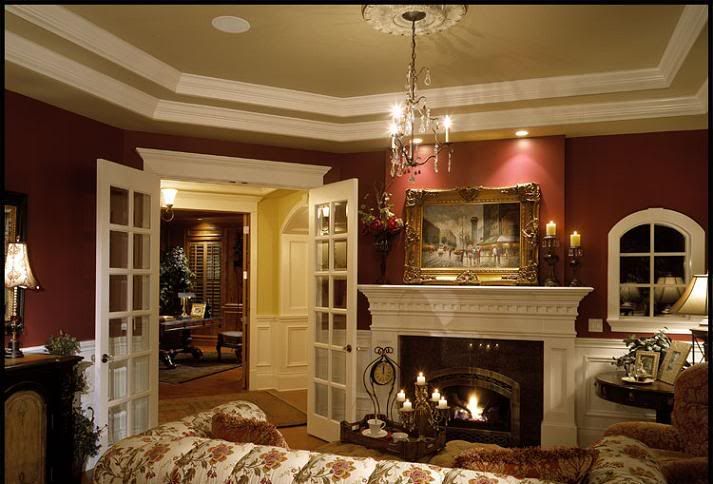Illustration: Wall tiling decoration of the Pavilion of Mahubay, 16th century
The influences and origins of nineteenth century English decorative arts, its pattern work, design styles and principles, is both complex and wide ranging. However, at the forefront of these influences is undoubtedly the impact of the decorative arts of Islam. From the reform principles of Owen Jones to the accomplished founder of the English Arts & Crafts movement William Morris, to the many designers, decorators, critics and writers of Victorian Britain, Islam proved to be a particularly rich deposit of what determined to be the fundamental level of all design, decoration and pattern as seen by the Victorians. Many saw and were on record as stating, that the principles behind the Islamic decorative arts system, along with its extremely effective visual record, was the only effective means of producing contemporary surface or flat pattern work.
Illustration: Islamic wall tiling decoration, 16th century
From woven and printed textiles, to carpet weaving, wallpaper design and ceramic tile work, the Victorians took Islamic design principles to heart. Non-representational, flat and graphic inspired pattern work was produced across design disciplines, and while some may dismiss this appearance as a form of fashion or intermittent enthusiasm for the decorative effects of Islamic design, very much as the revival movements that plagued the nineteenth century, this particular movement was much more centrally based within the Victorian decorative psyche.
Islamic designers were particularly expert at producing surface pattern. They had an innate understanding of both the materials used and the medium of surface decoration, as well as a mature approach to colour and tone. This greatly appealed to the English design reform movement. These reformers were trying to make sense of the muddled and chaotic decorative arts that had been a product of the first half of the nineteenth century with its new, wide-ranging but undisciplined manufacturing and retail system. They were determined that the second half of their century was to see a more settled period that used good judgement and sound design principles. They had particular issues with the whole aspect of the use of three-dimensional style illusions used on flat surfaces.
Illustration: Wall tiling decoration of Qasr Radwan, Cairo, 17th century
One of the fundamental points of surface decoration and design is to understand and therefore appreciate the surface that is to be decorated. Textiles in particular need good judgement when working out pattern work. Although three dimensional illusions may appear to be acceptable within the framework of the history of decoration and particular that of Europe, in general they are ill suited to the medium. Flat and graphic style pattern work is much more sympathetic to a textile medium and can produce much more in the way of variation between simplicity and complexity, colour and tone, than can ever be achieved with the slim palette of realism.
Illustration: Wall tiling decoration of Qasr Radwan, Cairo, 17th century
British design reformers saw Islamic principles of decoration as a perfect format to be used within their own decorative arts system. Colour and form were to be placed above that of any type of realism, or false illusion as they preferred to term it. From this fundamental view of decoration, all pattern work it was hoped would eventually one day be based. Much of the decorative styling of the eighteenth century was either dismissed or treated as essentially flawed. Although this attitude and perspective on the decorative arts was by no means universal, it did take on an aspect that eventually proved to be amongst the building blocks of Modernism.
In some respects it could be said that there is a linkage, however tenuous, between Islamic decoration, the reform movements within Europe and the eventual Modernist stand that has shaped much of the world we live in today. Although the Modernist movement might well have arrived at and achieved its ultimate goal of form follows function, without Islam, it is interesting nonetheless to speculate whether the same result might have been delayed or have taken a tangential route even, without the timely example of Islamic decoration and the principles underlying that decorative work.
Illustration: Wall tiling decoration of the Mosque of Amir Shaykhu, Cairo, 18th century
Islamic Designs for Artists and Craftspeople (Dover Pictorial Archive)
The Majesty of Mughal Decoration: The Art and Architecture of Islamic India
Islamic Designs in Color (Dover Pictorial Archive Series)
Islamic architecture and its decoration, A.D. 800-1500;: A photographic survey
Nishapur: Some Early Islamic Buildings and Their Decoration/E0058P
Ornament and Decoration in Islamic Architecture
The Language of Pattern: An Enquiry Inspired by Islamic Decoration (Icon Editions)
Islamic Designs (International Design Library)
The Art of the Islamic Tile
Islamic Ornament
Islamic Designs for Cornice, Balcony and Mashrabiyah Decoration, from "Art and Industry" Giclee Poster Print by Jean Francois Albanis De Beaumont, 12x16
Islamic Design (Dover Pictura)
Splendors of Islam: Architecture, Decoration and Design
Pattern in Islamic Art
Arabic Geometrical Pattern and Design (Dover Pictorial Archive Series)
Ornament and Design of the Alhambra (Dover Pictorial Archive Series)
Geometric Patterns from Islamic Art & Architecture























No comments:
Post a Comment